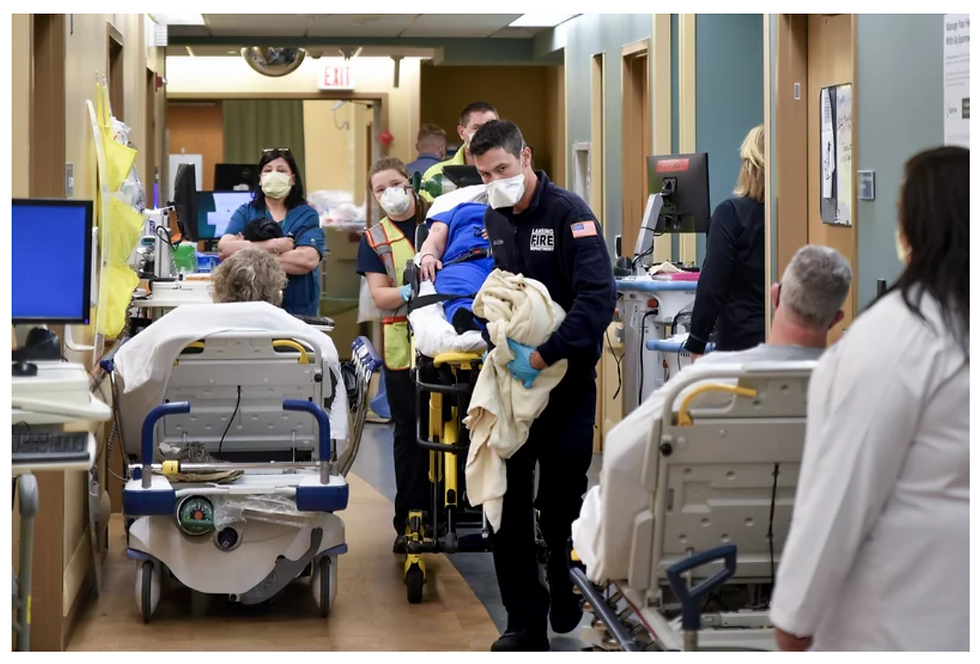Establishing a Tech-Enabled, Wound Program of Excellence
- Joe Ebberwein

- Nov 10, 2020
- 4 min read

Technology is here to stay and nothing has accelerated Telehealth and other mobile health solutions like what we have experienced during the Covid-19 pandemic. How can home health agencies take advantage of technology to create a Wound Program of Excellence? Is an agency that utilizes wound technology without access to wound certified nurses able to create a Wound Program of Excellence.
The following are some key questions that you must answer to ascertain whether or not you are offering the optimal wound care services to your patients.
What are your agency’s cost levers? Are you deploying LPNs to care for your wound patients in combination with oversight by certified wound nurses to manage the care and outcomes of wound patients? If Physical Therapy is part of the care team, are you using your PTs for wound care in lieu of additional nursing visits?
Are you using the integrated team to care for wound patients - PTs, OTs, Dieticians?
How are you ensuring accurate identification of the etiology of the wound and what are the optimal care pathways for wound patients by wound type?
What are your agency’s Key Performance Indicators driving success in your wound program- wound visits per episode, wound supply cost per episode, healing rates by wound type, profit or loss per wound patient episode, etc.
What does it take to build an internal Wound Program of Excellence? A program that can leverage the opportunity provided by PDGM to increase revenues by successfully managing wound patients.
It requires two components - Wound Technology combined with Wound Expertise.
1. Wound Technology
In recent years, a number of wound imaging technology solutions have emerged in the market. These solutions provide 2D or 3D automatic wound measurements and image analysis of wound tissue. While many home health electronic medical record (EMR) solutions offer wound documentation support aka wound modules, few have embedded up to date these technologies. Implementing wound imaging and analysis technology facilitates the flow of information between the field nurse and virtual teams of wound certified nurses. Additionally, having an objective, longitudinal view of the wound’s progress supports optimal management of the patient’s wound.
Agencies that deploy wound technology solutions are hardwiring efficiencies into their care delivery model. These are some easy wins - no more paper rulers resulting in the wrong or inconsistent measurements, standardized documentation, and objective wound healing data but it is only part of the equation.
2. Wound Expertise
Deploying a wound technology does not solve the entire problem. Here are the facts that we know about caring for wound patients in home health:
30+% of all post-acute patients have some type of wound.
Certified wound nurses are scarce, expensive, difficult to recruit, and hard to retain. Additionally, 90% of all certified wound nurses work in acute care hospitals or outpatient wound care centers.
Data indicate that on admission, wound etiology is misidentified about 30% of the time by home health clinicians, and staging of pressure injuries is incorrect about 40 - 50% of the time, affecting both reimbursement as well as care plan development for optimal outcomes. 70% of the time the treatment does not reflect evidence-based best practice.
Having access to wound expertise is a key component to establishing a wound program of excellence resulting in excellent clinical and financial outcomes along with:
Ongoing evaluation of staff competencies for wound care
Comprehensive policies and procedures for wound care and skin integrity
Evidence-based wound management protocols and care plan optimization
Deploying telehealth and other mobile health wound imaging tools that produce greater quality while reducing the total visits per episode of care.
Standardized, optimal wound formulary by wound type
Allows for longer wear times
Allows for non- surgical, enzymatic, or mechanical debridement at the bedside
Produces lower visits per episode
Wound metrics and outcomes dashboard for monitoring
As the market shifts toward innovative models that move care from institutional settings to the home, including SNF@Home, hospital to home, home-based physicians, and payers deploying care in the home, home health agencies, as well as non-medical home care providers, have an opportunity to capture this emerging market. As models of reimbursement move from PDGM to bundles, risk-sharing payments with Medicare Advantage, etc. outcomes data is at the core of success.
It is imperative that agencies know their clinical and financial data in order to negotiate contracts for sharing in cost savings and they must deploy both the technology and the wound expertise to develop a successful Wound Program of Excellence.
About Corstrata
Corstrata enables Post-Acute Providers to become Wound Programs of Excellence with our Technology-Enabled wound consult model for the management of complex & chronic wounds in home health, hospice, rehab hospitals, and nursing homes.
Corstrata’s senior-level, wound-certified nursing staff are some of the best and most experienced in the industry. We couple their expertise with the most advanced wound dressing technology, latest evidence-based research, and our Telehealth infrastructure to ensure that we deliver the right patient support at the greatest point of need – the bedside.
To learn more, contact Corstrata for a conversation to see how we can help make your wound management program easier and more profitable.




Comments